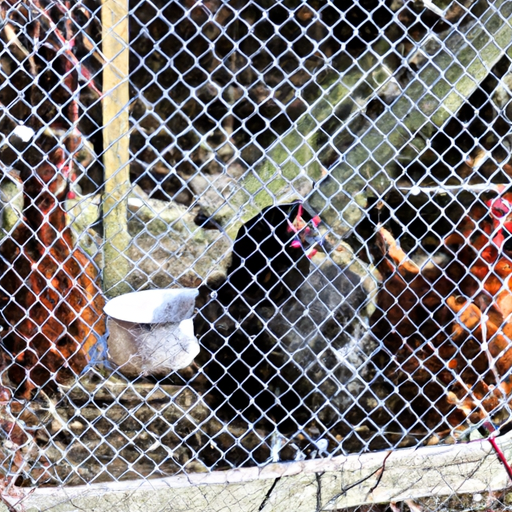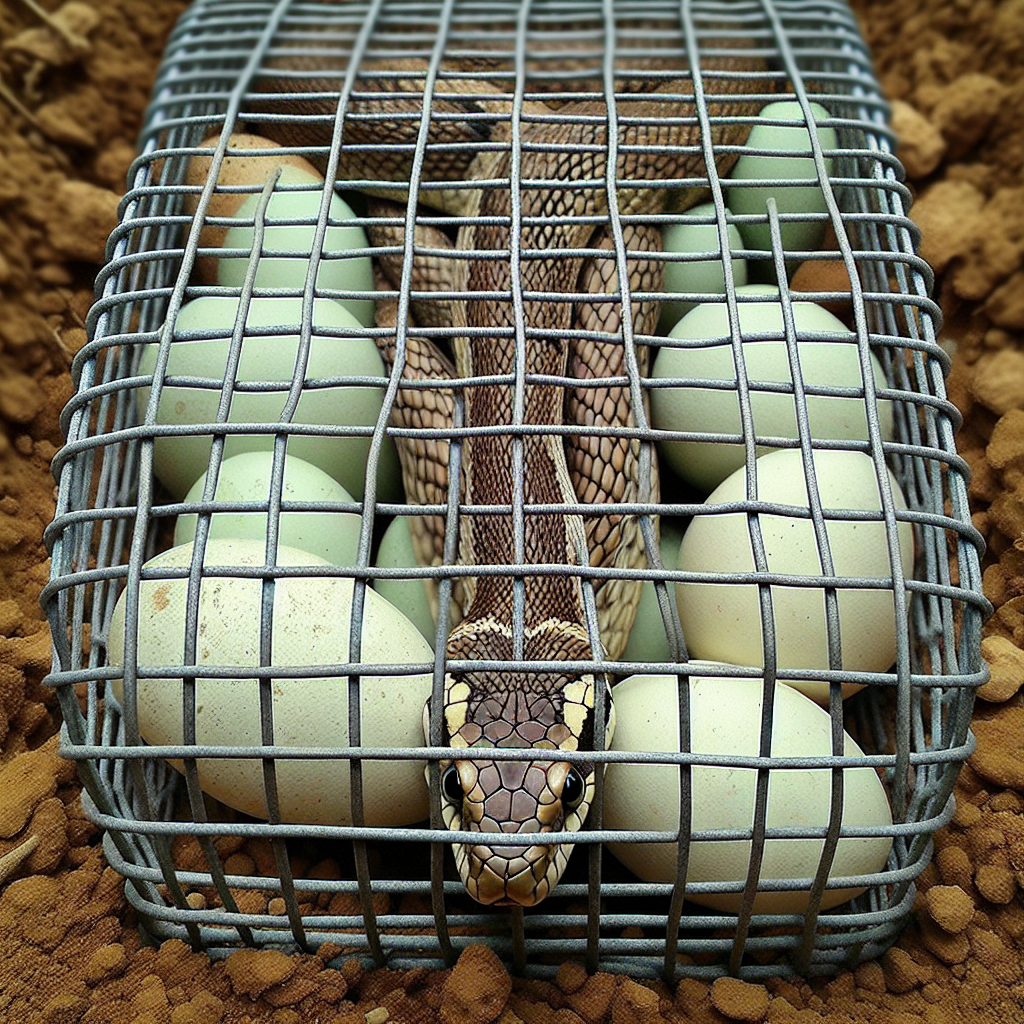Are you a backyard chicken enthusiast looking to protect your feathered friends from potential predators? If so, you’re in the right place. In this article, we will explore the various steps and considerations involved in designing a predator-proof chicken coop. From sturdy fencing to secure latches, we’ll guide you through the essentials to ensure the safety and well-being of your chickens, allowing you to enjoy their company worry-free. So let’s roll up our sleeves and get started on creating a sanctuary for your beloved flock! Designing a predator-proof chicken coop is essential to ensuring the safety and well-being of your flock. From the location and size of the coop to the materials used and the layout of the structure, there are several factors to consider when designing a secure environment for your chickens. In this article, we will explore various aspects of coop design and provide tips and recommendations to help you create a predator-proof setup.
Design
Finding the right location
Choosing the right location for your chicken coop is crucial in minimizing the risk of predator attacks. Ideally, the coop should be situated in an area that is easily visible from your house, allowing you to monitor the flock from a distance. Additionally, try to avoid locating the coop near dense vegetation or areas where predators might seek shelter, such as woods or tall grass.
Choosing the appropriate coop size
When designing your chicken coop, it’s important to consider the size of your flock. Adequate space is necessary to prevent overcrowding, as overcrowded coops can lead to stress, disease, and increased aggression among the birds. The general rule of thumb is to provide at least 4 square feet of floor space per chicken. However, if possible, it’s always a good idea to err on the side of more space.
Optimizing the coop layout for security
The layout of the coop plays a significant role in deterring predators. One effective strategy is to create a “run” area outside the coop where chickens can safely roam during the day. The run should be surrounded by a sturdy fence, preferably made of dig-proof wire mesh, buried at least one foot deep to prevent predators from digging underneath.
Fencing
Selecting sturdy materials
Choosing sturdy materials for your coop fence is crucial to prevent predators from gaining access. Opt for heavy-gauge wire mesh that can withstand the pressure of potential predators. It’s important to note that some predators, such as raccoons, can easily manipulate weak wire mesh, so invest in high-quality materials.
Installing dig-proof wire mesh
Predators often attempt to dig their way into the coop, making it essential to install dig-proof wire mesh. Bury the wire mesh at least one foot deep around the perimeter of the coop and run, ensuring there are no gaps or weak spots. This will prevent predators from digging underneath and gaining access to your chickens.
Adding an electric fence as a deterrent
For additional security, consider adding an electric fence around your coop. Electric fences are an effective deterrent, as they give predators a shock when they come into contact with the wires. Make sure to follow local ordinances and regulations regarding the installation and use of electric fences.
Coop Structure
Reinforcing windows and doors
Windows and doors are potential weak points in the coop structure, making it essential to reinforce them. Use sturdy materials, such as metal or heavy-duty plywood, for windows and doors. Consider adding bars or mesh grilles to the windows to prevent predators from breaking in.
Using heavy-duty locks and latches
Invest in heavy-duty locks and latches for all coop access points. Predators are often persistent and can manipulate weak locks and latches. By using heavy-duty hardware, you can minimize the risk of predators gaining access to your flock.
Sealing gaps and cracks
Inspect the coop regularly for any gaps or cracks that predators could exploit. Seal these openings with sturdy materials, such as caulk or expanding foam, to ensure that predators are unable to squeeze through. Pay close attention to areas where the coop meets the ground and where different materials join together.
Roosting Bars
Creating elevated roosts
Elevated roosts help chickens feel safe and secure during the night when they are most vulnerable to predators. Install roosting bars that are at least two feet off the ground and position them away from walls or windows. This will prevent predators from accessing the roosts and ambushing your chickens.
Avoiding low-hanging branches or perches
When designing your chicken coop, be mindful of the surrounding vegetation. Avoid locating the coop near low-hanging branches or perches that predators could use to gain access to the coop. Trim any nearby branches or vegetation that could provide easy access for predators.
Adding protective covers
Adding protective covers to the roosting bars can provide an extra layer of security. Consider using a sturdy wire mesh or hardware cloth to create a barrier that prevents predators from reaching the chickens while they sleep. Ensure that the covers are securely attached and properly installed.
Nesting Boxes
Designing enclosed and secluded boxes
Nesting boxes should be designed to provide a secluded and secure environment for hens to lay their eggs. Use sturdy materials to construct the boxes, ensuring that they are enclosed with a solid roof and walls. This will prevent predators from accessing the eggs or harming the hens while they are nesting.
Providing easy access for egg collection
Make sure the nesting boxes are easily accessible for daily egg collection. This will minimize the time spent in the coop and reduce the risk of encountering potential predators. Consider installing a separate access door or a removable panel for convenient egg retrieval.
Using strong and secure materials
Choose strong and secure materials when constructing the nesting boxes. Predators such as rats and raccoons can easily damage weak materials to gain access to the eggs. Use solid wood or metal for the framework, and line the boxes with sturdy materials such as hardware cloth or thick plywood.
Lighting
Installing motion-activated lights
Motion-activated lights can be an effective deterrent against nocturnal predators. Install these lights in and around the coop to illuminate any potential threat. When a predator approaches, the sudden burst of light can startle and discourage them from attempting to access the coop.
Utilizing timers to simulate day-night cycles
Utilize timers to control the lighting inside the coop and simulate natural day-night cycles. Maintaining consistent light cycles helps regulate the chickens’ behavior and can minimize the risk of attracting predators during the night when the coop is most vulnerable.
Avoiding excessively bright or dim lighting
While good lighting is important for the safety of your flock, it’s crucial to strike the right balance. Avoid excessively bright or dim lighting, as it can disorientate chickens and make them more susceptible to predators. Aim for moderate and natural lighting conditions inside the coop.
Ventilation
Balancing air circulation and security
Proper ventilation is essential to maintain a healthy environment inside the coop, but it must be balanced with security. Install predator-proof vents or mesh covers to allow for adequate air circulation while keeping predators out. Ensure that your ventilation system is designed to prevent easy access for both large and small predators.
Using predator-proof vents or mesh covers
Predator-proof vents or mesh covers are essential to keep predators from gaining access through ventilation openings. Use sturdy wire mesh with small gaps to prevent predators from reaching through or breaking the vents. Regularly inspect the vents for any signs of damage or weakness.
Avoiding large gaps or openings
When designing your coop, avoid creating large gaps or openings that could allow predators to enter. Ensure that all openings, windows, doors, and vents are securely covered and that there are no areas where predators could squeeze through.
Vegetation Management
Trimming trees and shrubs near the coop
Overgrown vegetation near the coop can provide hiding spots and easy access for predators. Regularly trim trees, shrubs, and tall grass near the coop to eliminate potential hiding places and reduce the risk of predators using them as a launching pad to attack your chickens.
Removing potential hiding spots
Inspect the area around the coop for any potential hiding spots that could harbor predators. Remove debris, such as woodpiles or discarded equipment, that could provide cover for predators. By keeping the area clean and free from hiding spots, you can minimize the risk of predator attacks.
Implementing a vigilant insect control plan
Insects can attract predators to your coop, as they serve as a food source. Implement a vigilant insect control plan to reduce the presence of insects around the coop. This can include measures such as proper waste management, regular cleaning, and the use of insect-repellent plants or natural insecticides.
Feed Storage
Using secure and rodent-proof containers
Proper feed storage is crucial in preventing predators, particularly rodents, from being attracted to your coop. Invest in secure and rodent-proof containers to store your chicken feed. Metal bins with tight-fitting lids or heavy-duty plastic containers are effective options.
Storing feed away from the coop
Store your chicken feed away from the coop to reduce the risk of attracting predators. If possible, keep the feed storage area well away from the coop, ensuring that it is secure and inaccessible to any potential predators. By separating the feed from the coop, you can minimize the chances of predators being drawn to the area.
Regularly inspecting for signs of pests
Regularly inspect the feed storage area and the coop for any signs of pests. Look for droppings, chewed containers, or gnawed holes, as these can indicate the presence of rodents or other predators. If you notice any signs of pests, take immediate action to address the issue and prevent further infestation.
Predator Deterrence
Employing guard animals
Guard animals, such as dogs or geese, can serve as effective deterrents against predators. Their presence alone can discourage potential predators from approaching the coop. However, it’s important to select guard animals that have been properly trained and are suitable for coexisting with chickens.
Installing motion-activated sprinklers or noise devices
Motion-activated sprinklers or noise devices can startle and deter predators. Install these devices in and around the coop to create an extra level of security. When a predator triggers the motion sensor, the sudden burst of water or loud noise can scare them away and protect your chickens.
Using scent deterrents or predator decoys
Scent deterrents, such as predator urine or odorous plants, can be effective in deterring predators. Apply these deterrents around the perimeter of the coop to create a scent barrier that predators will associate with danger. Additionally, using predator decoys, such as fake owls or hawks, can help create the illusion of a predator presence and deter potential threats.
In conclusion, designing a predator-proof chicken coop requires careful consideration of various factors such as location, size, fencing, coop structure, roosting bars, nesting boxes, lighting, ventilation, vegetation management, feed storage, and predator deterrence. By implementing the strategies and recommendations outlined in this article, you can create a secure environment for your chickens and minimize the risk of predator attacks. Remember to regularly inspect and maintain your coop to ensure its effectiveness in protecting your flock.




